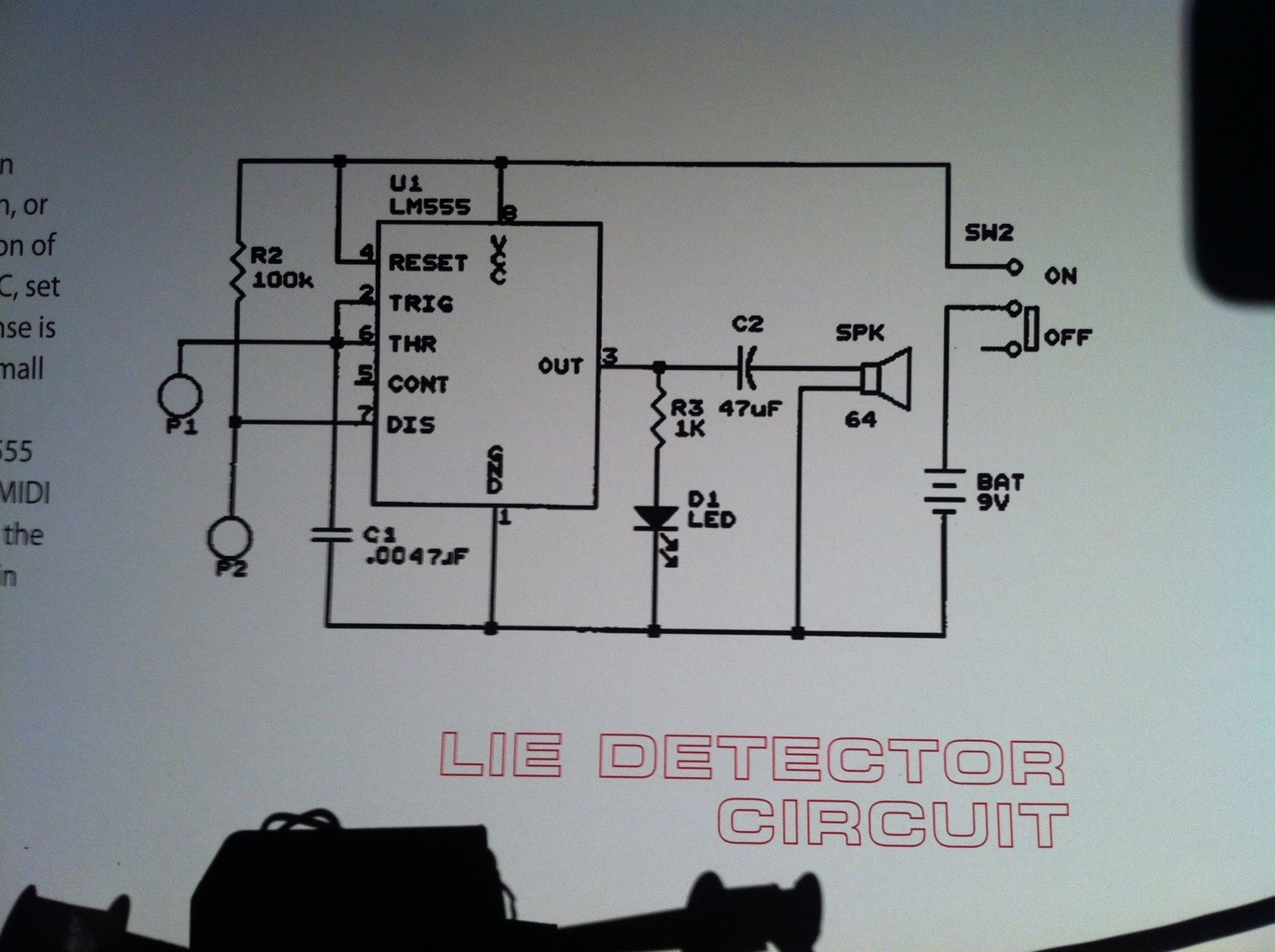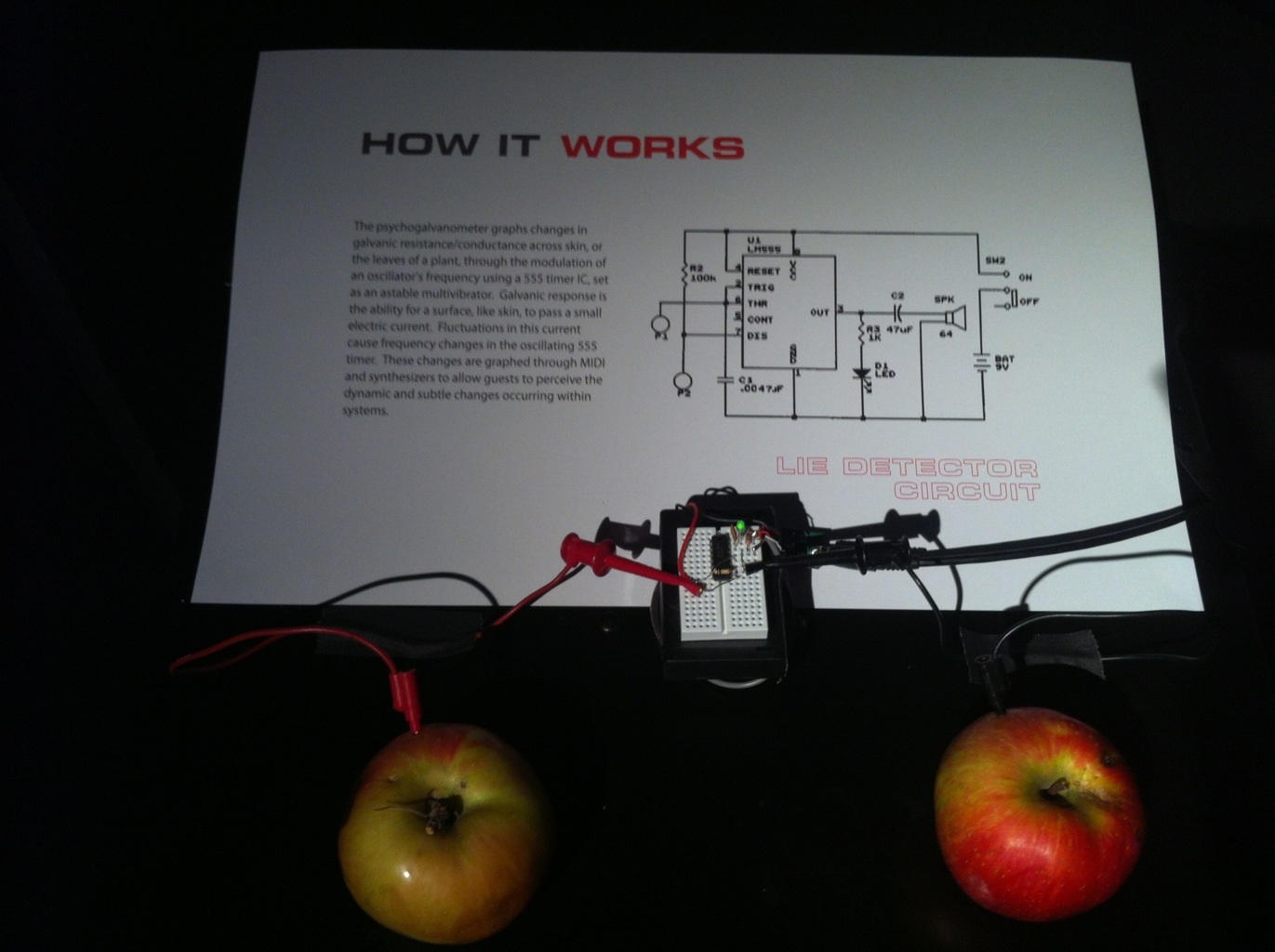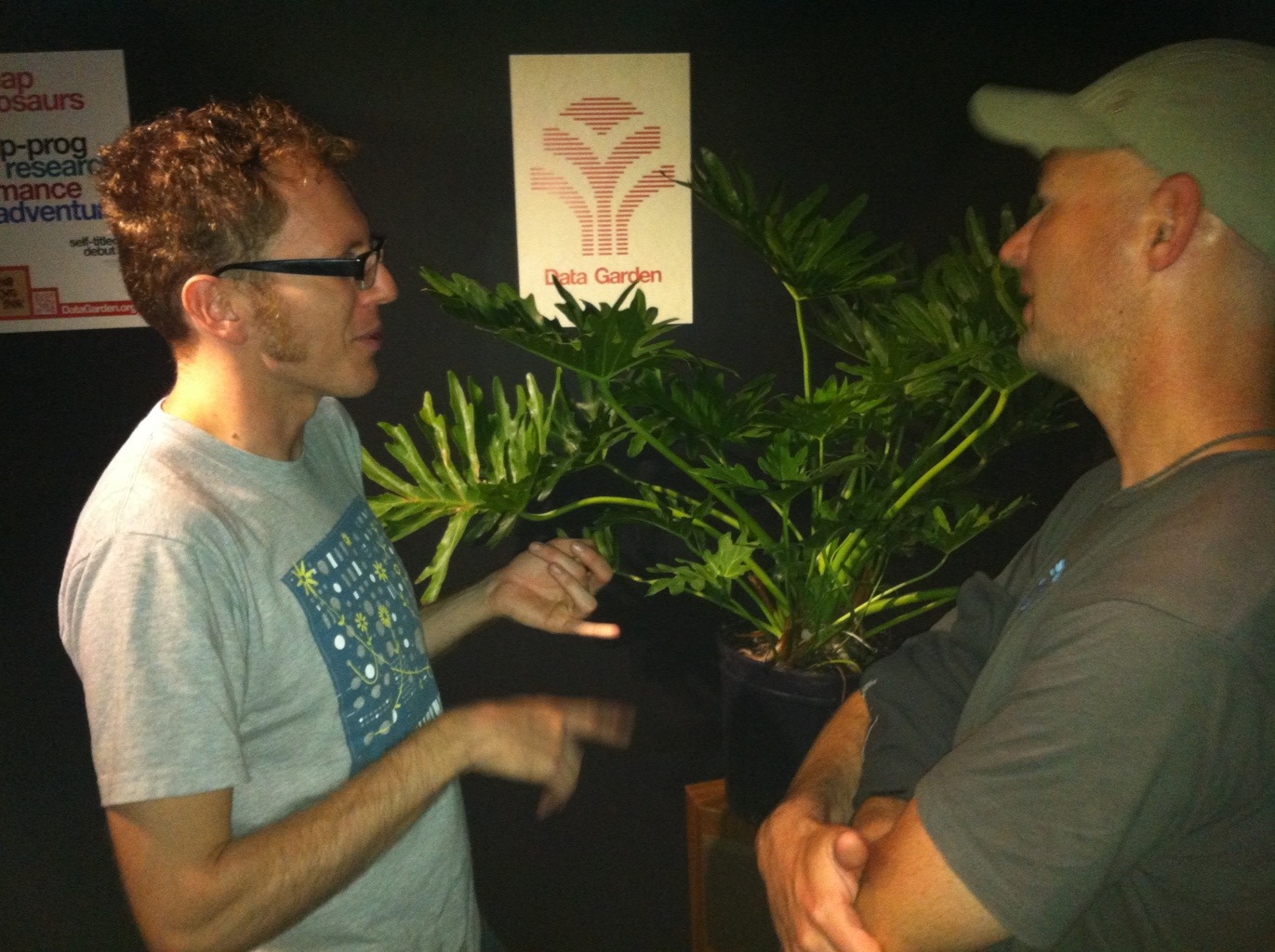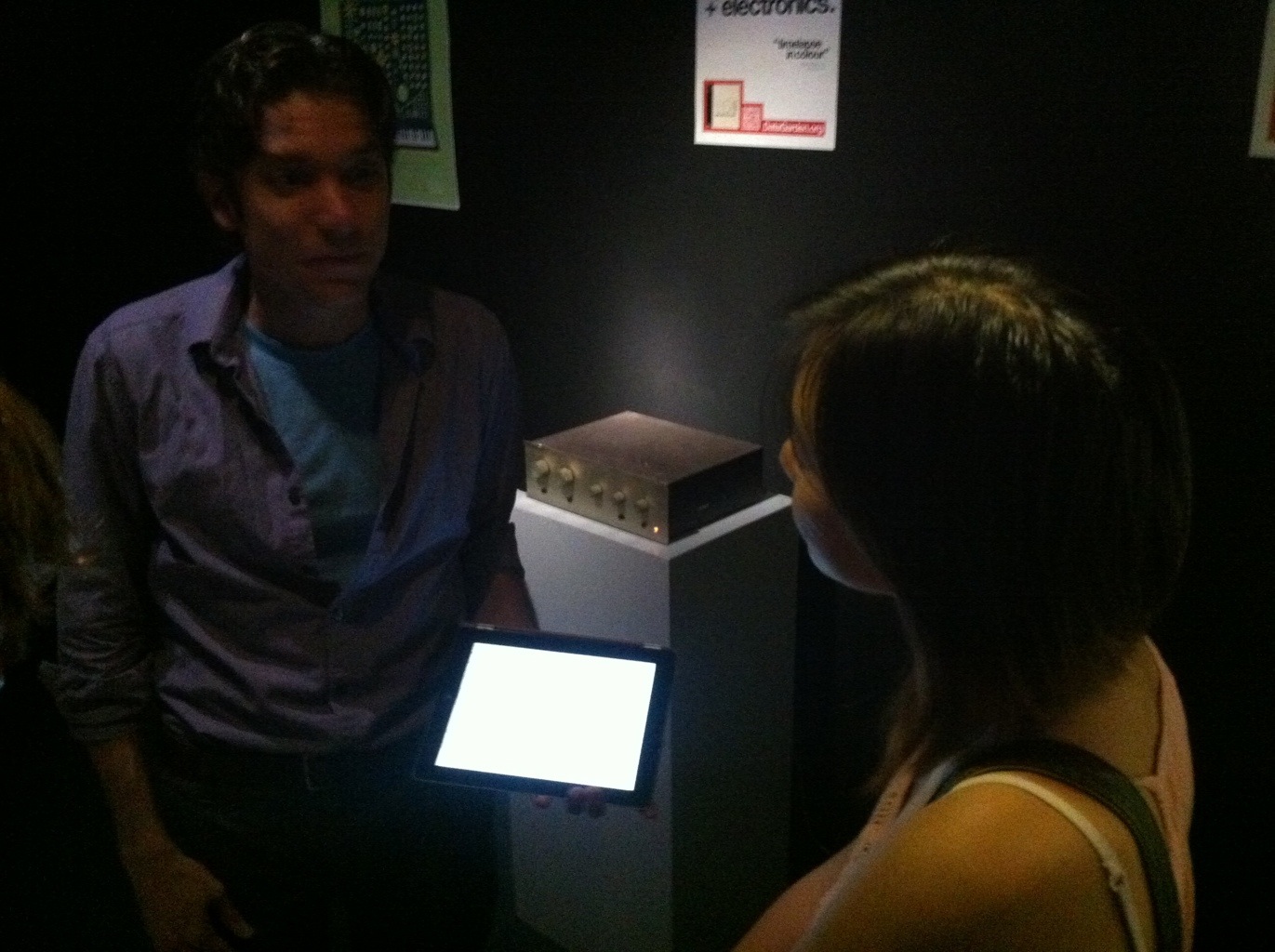All comments are in this doc.
Please take your comments and post them as a “comment” added to your embedded presentation.
Plants lie. Data Garden. Check it out.




Some of the key findings of experimental psychology in the perception of time
Reference: Hearing in Time by Justin London
STIMULI
- Difference in stimuli mean difference in perception
Experimental results in discrimination and perception are different for sonic and visual stimili.
- Subjective Rhythmicization
We group a series of identical, isochronous stiumuli into groups of twos and threes, i.e. we hear duplets and triplets or a two-beat or three-beat “measures” even when there are no structural cues.
- Upper limit of subjective rhythmicization: about 1800ms
Above 1800ms successive sounds are not heard as continuous; therefore we no longer hear them in terms of a coordinated motion or movement.
- Connection between hearing/seeing rhythm and perceiving movement
Successive visual stimuli presented within a certain temporal range give the illusion of motion
TIME RESOLUTION
- Shortest perceived interval: ~2ms
Usually measured as separation time required to discern that two tone onsents are present as opposed to one.
- Shortest ordered onset distinction: ~20ms (10 times the previous number!)
This is the shortest time necessary to discern which onset was first and which second.
- Longest interval that we can perceived/performed rhythmically: 5-6 seconds
- shortest perceptual duration regardless of sensory mode: around 130ms with %5-10 accuracy
Also shortest discernible interval between to brief sounds: (around 100ms)
Also the minimum time to allow for the cortical processing of musical elements (around 100ms).
Also the fastest possible vocal articulation of rapidly repeated syllables (around 120ms).
- Shortest musical beat/pulse: 200-250ms
At intervals less than this range, subjects begin to tap every other beat (i.e. they sub-divide)
But we can distinguish two onsets as two when they are 100ms apart! what’s up? Hearing a “beat” requires at least the potential for subdivision.
- Shortest anti-phrase repeatable musical beat: around ~450ms
Stimulus is a repeated tone, subject is asked to tap/clap in between the notes
- The “Indifference Interval”: 600-700s
This is the tempo at which a beat is subjectively neither “too fast” or “too slow”
Also the time interval below which subjects overestimate, and above which subjects underestimate the elapsed duration
Also the “spontaneous temp” or “natural pace”: the tempo at which subjects tap a finger with no other instructions (there’s great variation, but the mean is ~600ms)
Spontaneous tempo varies with age: younger subjects (4-6 years) prefer ~400ms; suggests that “spontaneous tempo” is kinematically rooted (i.e. smaller body, faster tempo)
- The “Just Noticeable Difference”: 200-250ms
A basic psychological measure of perceptual acuity: the shortest perceivable difference in duration between two complex stimuli; e.g. Smallest perceivable difference of duration between two six-tone sequences over a wide range of inter-onset-intervals (from 100 to 1000ms)
The JND is proportional to the total duration of the stimuli.
- Subject Rhythmic Organization
Differing contexts or modes of attention affect perception of duration/interval. For example, when performers are directed to shift their attention to different levels within the metrical hierarchy in a series of performances of the same passage, focusing on the eighth notes versus quarters versus half notes causes systematic shifts in tempo: Counting at higher levels leads to faster performances.
BIBLIOGRAPHY
London, J. (2004). Hearing in time: Psychological aspects of musical meter. New York: Oxford University Press.
Desain, P., & Windsor, L. (2000). Rhythm perception and production. Lisse ; Exton (PA): Swets & Zeitlinger Publishers.
use line~
——
<pre><code> ———-begin_max5_patcher———- 1257.3oc4Z1sbZiCEG+Z3oPim8hjNzLVxeu2sOG6zIivV.pwHyXISBamxy9p OrIlhsQPotrYun.VRV5b9oi9ejT52lNwYdwaDtC3OA+MXxjuMcxDcQpBlT+7 Dm032RywbcybRKVulvDNyL0IHuIzk+IwJBm.xoLBGfKI.bVFksD34tlSR0ki KAk30a3.QAP1ZP5JLaIAPYfEkDL3gbxBwi.LKCHaE3gR5xUhGaFHUGjVTwzi lecgaJkiISfEzB1ykjTgwSBcCdxcFH.Fp9xs9CvWZdKrHckz1Z8FAw5V4ifp ufg5mBQsdIZl1MKl+0O642XTKJXBFdMQW0eURw4M0vpVSY4DgFZv2KrnRzTp aqNgS+Gcm.kCopzuOcp5iYVNorlv43kjSlT9Cnj+NCCq.nmxYQ9QVCKXhgR9 ZlYPVbOrBcgrB0Iqf8vp5hMsTraCwXgNNfubEXjQdUZymPQUn2dKoXR3ERQj 4E8zuGxsGJ5cSnH5BoHmtjoF.fyb4J0qio8oWTIEKvZYg8J8.71BZFHMml9B eF30UD1VRIXWQEnhqjQLlB3gcj77hWAZdltpnL6Q4ukpJDAoT8hTwJ.Yqb.4 fGlmiSeocS6TKIn+onPyrIxL4.CzpJQA8LGAu2TE5C8qwunXOLPqLqjjAyIh WIDlVVVFgukVTwAYjb7NvVbdEQqJqpTtDATvHCqJeJIqYGxuljCpuhRt2HYV qQtCuKNV6UlzM9tMedv2ZFcOWW2Cq1Z6vQC5VGBvelvvyyIscttkIOYk7h7B r35V.OPtEXvYTEgI5TDnXqUEMnrNNY3TKv3+ejZAFowfmWvEBwX34yr.S9Oa lEYLszHNK7LteL5xfGLQmc17Z8BunqTnx9UzWJXMKz+o3p1v1OfbmWrdqhPS jkYmypcwzIhBu.E6QV9p0Vi6H2uQMGgPVnDE7QSIpedDYinh2GaQkfiDXuji L4l7Tf7fotCROzGQUke.r8FfACzj5LHB9QDQ4zsjmVhorCqC2hKO3bmVaWRy PytOiLeEePmtKJlL3ZwtPU2x1AmeA46+R8uCrJmxUx5MaSFukj8LVHJoyqDj 2+EuFZ0TSwE4YRJVzTbS4sM5FyndB6n53xSCJ5GrG0VYX6RKaZEiJ3hcFT42 QCVKmtU0E9jam0RYpZ+bjam0SkcuJ9VyV8BCSazQYMecaRF7o8xA.5bV8LOy kF4O3tj98rM85HtaYJxzco4j8xi14ddxfB8TJ8gwCQlnOJjQf2HGl8x7aCxF jIuYcTiI6YerI7lbG.2GrQpWnO6+4QCzbR4H+gPSvuEzH8izBFSawWCdDEKW lSFBAHSRqjC6sreD3+q9BSnLwMMJHCmZQd6PO8DuWzP99s4F0ug2NVOtLNaP WtNhON47d7s4lUu9iSzkpf1N0mZ5G9ymocUU4GSLdQUYZSW2bm9f2c2LBWPY 5SZzpQQG0lUzrLBq8rWFkqBv0np6oNaMG0oNNq43gFM6wyJ6wa73ShE1S3nY NnHKLG3HF9Xk8DOd1SrM1Sx3YO1XNiW3SnEliBNv6JqYbXSvc0BcaBbBFOqw F3.GQUYqVWMh7wlj5wi1Bq36pk4w2UKyO1u61ZPiFarY2Ei2luhrLJdbrF+e grwrMd7lMaIk75tTaHxi370hR8s0MS+HkYdT2iNp+ORzz9fopd66S+W.ePWy . ———–end_max5_patcher———– </code></pre>
Heart-rate Sensors and Stethoscopes:
Toys/Game Controllers:
EEG sensors:
Finger Print Scanner:
Eye/Retina Scanners:
Touch Sensing:
Sensor vendors
External References